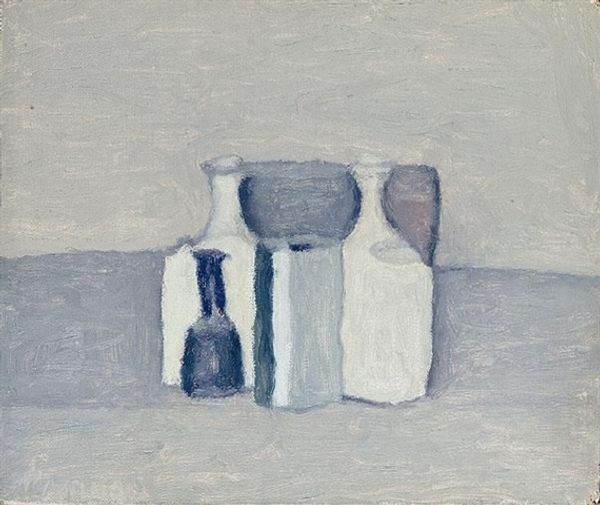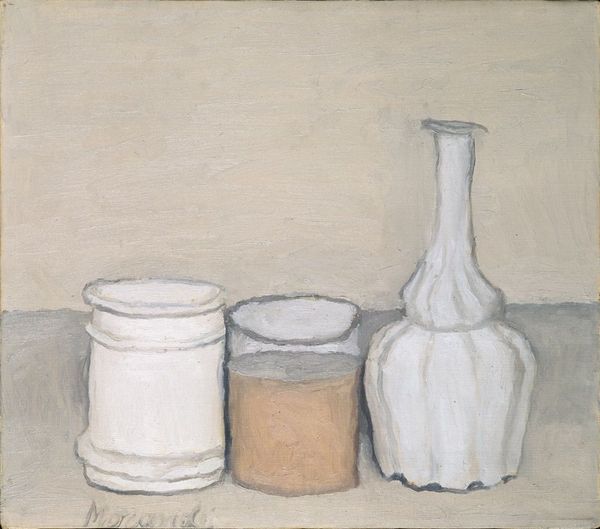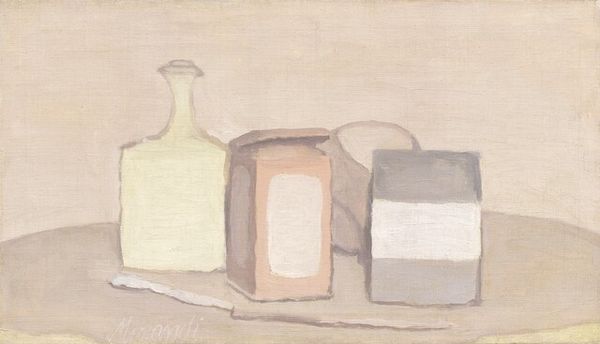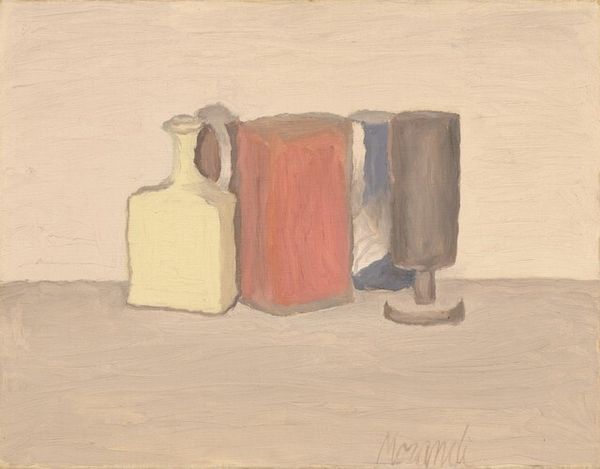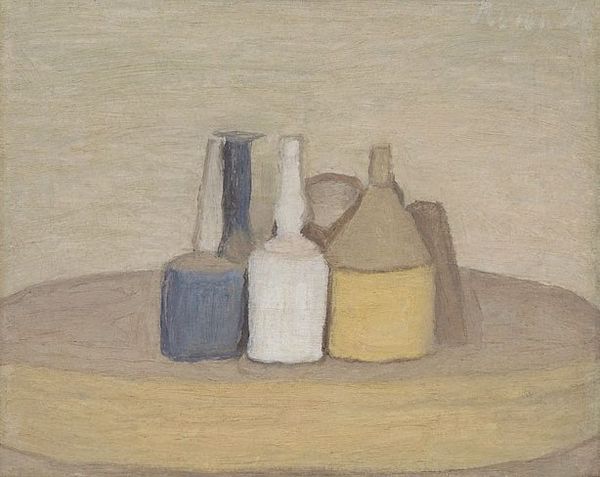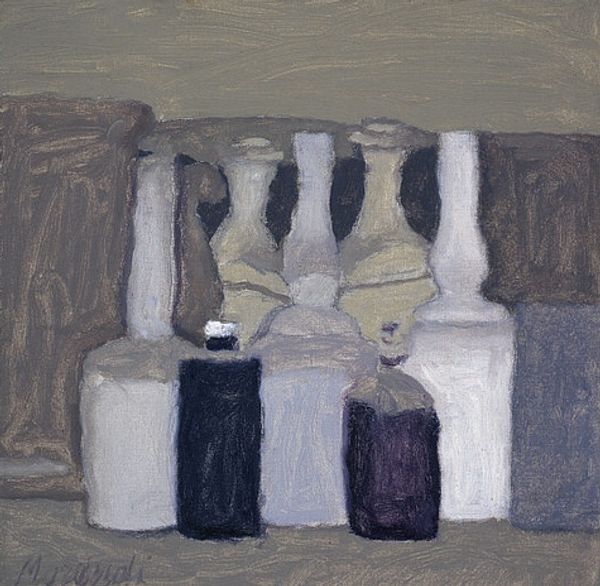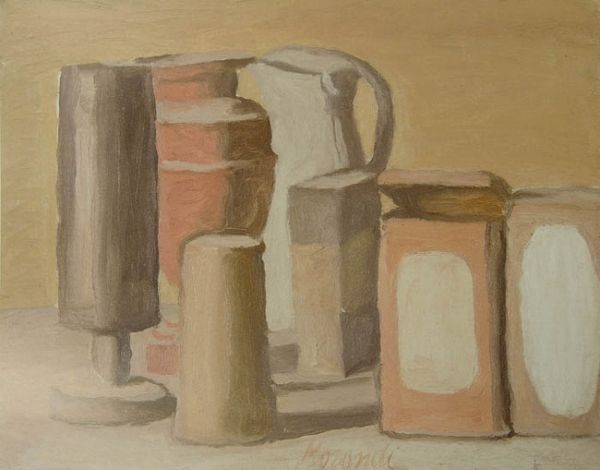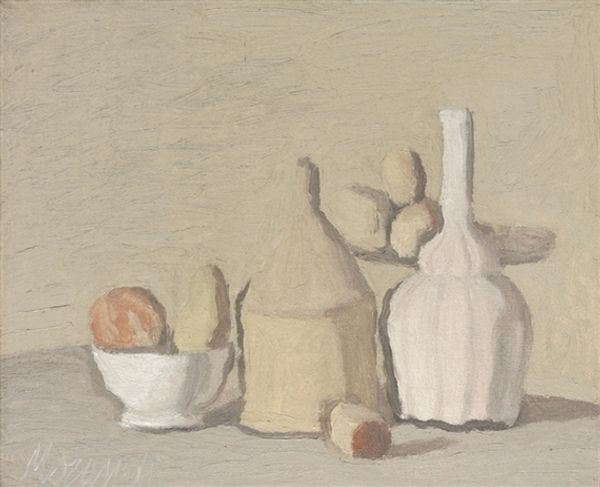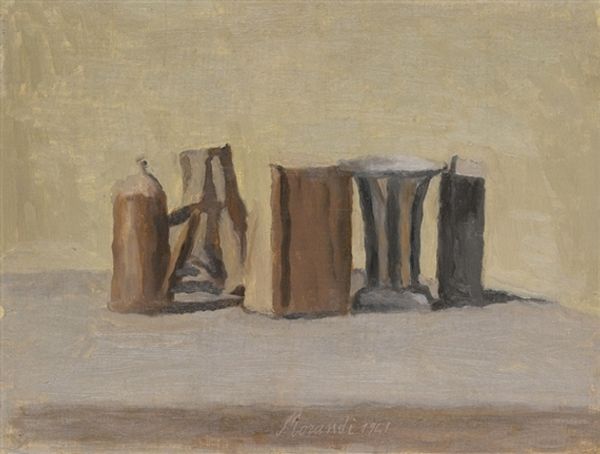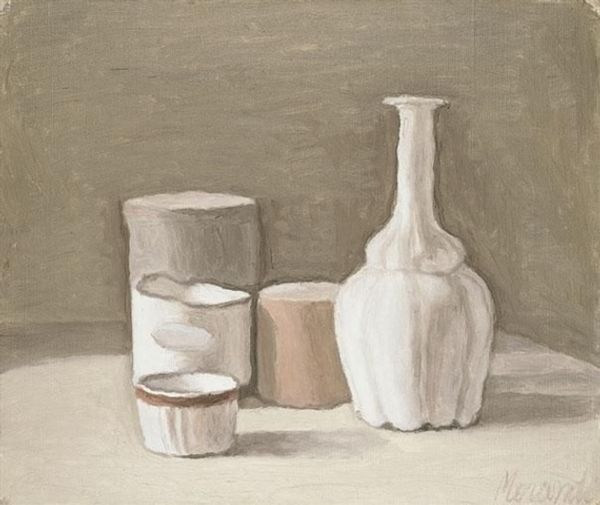
painting, oil-paint
#
painting
#
oil-paint
#
intimism
#
geometric
#
italian-renaissance
#
modernism
Dimensions: overall: 35.6 x 45.7 cm (14 x 18 in.) framed: 42.2 x 52.1 cm (16 5/8 x 20 1/2 in.)
Copyright: National Gallery of Art: CC0 1.0
Curator: Looking at Giorgio Morandi's "Still Life" from around 1955, my first reaction is a sense of profound stillness. The muted colors and simple forms create a quiet, meditative atmosphere. Editor: Indeed. It's deceptively simple, isn’t it? I'm drawn to consider Morandi's relationship with the interwar period, and Italy’s socio-political environment which, undoubtedly, seeped into his work, into this emphasis on ordinary, domestic objects elevated, I would suggest, almost to icons of resilience. Curator: That’s a crucial point. And one could analyze these objects not as literal bottles and jars, but as stand-ins, perhaps, for figures, subtly referencing social dynamics within post-war Italian society. The gentle tonality evokes a sense of harmony, but are there subtle tensions within that harmony? The shapes are soft but definite. Editor: Precisely. The positioning is so important, too, if we explore this through a sociological framework. These aren’t objects placed randomly, are they? There’s a clear visual hierarchy established that surely echoes some reflection of hierarchical dynamics from a specifically Italian point of view. It brings up considerations of class, gender, the very architecture of societal space as viewed and critically processed, by the artist. Curator: And despite their seeming uniformity, each object possesses its own unique character, brought out by slight variations in color and shape. Do you think the limited palette also says something? Editor: Undeniably, this economy of color channels specific narratives linked to wartime austerity, the scarcity of resources. I'd even dare suggest Morandi cleverly alludes to these lived realities. We cannot divorce this apparent 'simplicity' from its context, its silent narrative of social tension. The lack of embellishment speaks volumes. Curator: Thank you. Reflecting on that context has opened new angles of considering this painting. Editor: Thank you for offering a rich lens with which to examine Morandi’s choices! It's a testament to the power of contextualizing art.
Comments
No comments
Be the first to comment and join the conversation on the ultimate creative platform.
